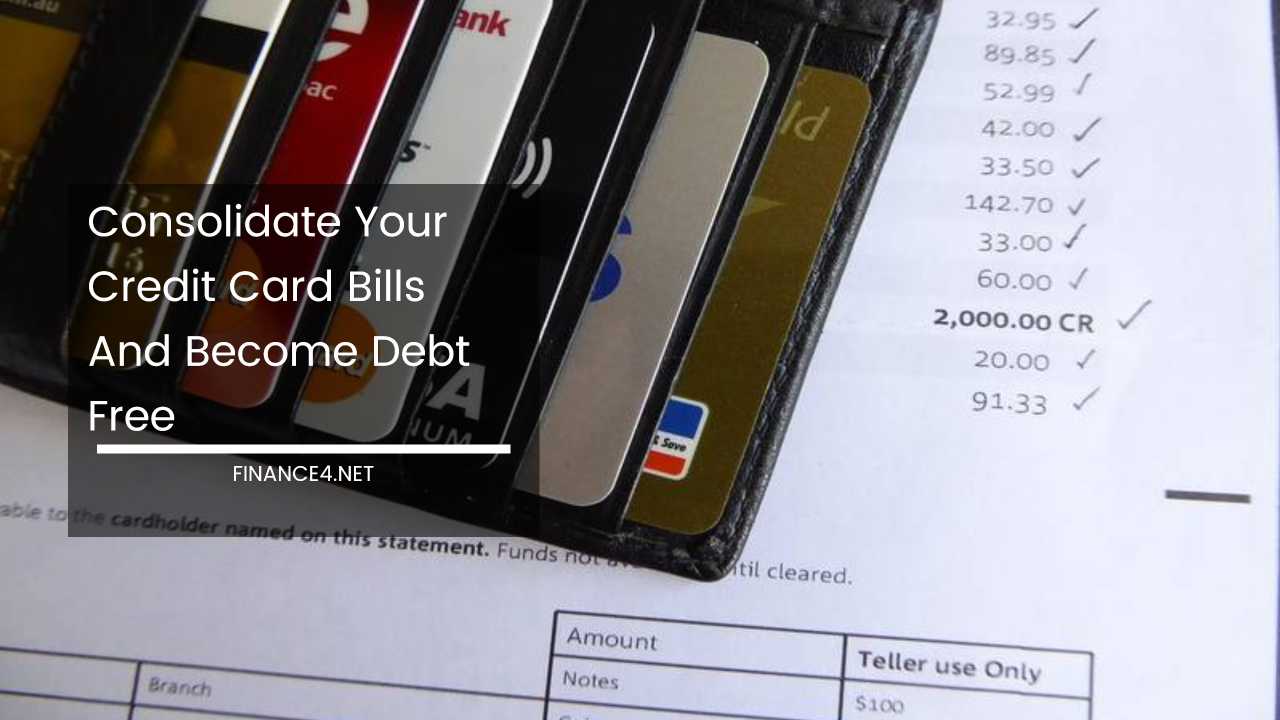Conquer Credit Card Debt: Your Guide to Consolidation

Conquering Credit Card Chaos: A Comprehensive Guide to Debt Consolidation
Do you find yourself buried under a mountain of credit card statements, overwhelmed by a relentless cycle of due dates and minimum payments? You’re certainly not alone.
Millions of people struggle with the burden of credit card debt, feeling trapped in a seemingly endless loop of high interest rates and compounding balances.
But fear not! Debt consolidation can be a powerful weapon in your financial arsenal, helping you simplify your finances and pave the path to debt freedom.
This comprehensive guide will equip you with the knowledge and strategies you need to navigate the world of debt consolidation, explore the three main methods, and ultimately make informed decisions to achieve financial liberation.
The Allure of Debt Consolidation: Simplifying Your Path to Financial Wellness
At its core, debt consolidation involves strategically merging multiple debts, typically high-interest credit card balances, into a single loan or account.
This approach streamlines your repayment process by replacing numerous monthly payments with one consolidated payment. Ideally, this new payment comes with a significantly lower interest rate, saving you money in the long run and accelerating your debt payoff journey.
Think of it as transforming a chaotic juggling act with multiple credit card statements into a single, manageable transaction each month.
Unveiling the Three Avenues to Consolidation: Choosing the Optimal Path for You
There are three primary strategies for consolidating your credit card debt, each offering unique advantages and considerations. Let’s delve deeper into these methods to help you determine the approach that best aligns with your financial situation:
1. Debt Consolidation Programs: Partnering with a Debt Relief Specialist
Debt consolidation programs involve enlisting the services of a specialized company to help you tackle your credit card debt. Here’s how it works:
- Financial Assessment: The company will conduct a thorough analysis of your financial health. They’ll meticulously assess your income, expenses, and the total amount you owe across your credit cards. This comprehensive picture allows them to craft a personalized debt consolidation plan.
- The Power of Negotiation: Debt consolidation companies leverage their expertise and established relationships with creditors to negotiate on your behalf. Their goal is to secure significantly lower interest rates on your credit card debts, making your repayment plan more manageable.
- Streamlined Repayment Plan: The company crafts a customized monthly repayment plan tailored to your financial situation. They then work towards getting approval for this plan from your creditors.
- Single Payment Convenience: You make a single, consolidated payment to the debt consolidation company. They, in turn, distribute the funds amongst your creditors, ensuring timely payments are made.
Advantages:
- Professional Negotiation: Debt consolidation companies leverage their experience and established relationships to potentially secure substantial interest rate reductions, significantly reducing your overall debt burden.
- Simplified Management: Making a single monthly payment simplifies budgeting and reduces the risk of missed payments due to juggling multiple due dates.
- Potential Credit Score Improvement (Long-Term): Successfully completing a debt consolidation program can demonstrate responsible debt management and potentially improve your credit score over time as your credit utilization ratio decreases.
Considerations:
- Company Selection: Choosing a reputable and trustworthy debt consolidation company is crucial. Research their Better Business Bureau (BBB) record and customer reviews to ensure they operate ethically and transparently. Don’t hesitate to interview multiple companies before making a decision.
- Fees: Debt consolidation programs often involve upfront fees and ongoing service charges. Understand the fee structure beforehand to factor these costs into your decision-making.
- Credit Score Impact (Short-Term): Enrolling in a debt consolidation program might initially cause a temporary dip in your credit score as a new account is opened and your credit utilization ratio may temporarily increase. However, the long-term benefits of successful debt consolidation can outweigh this initial dip.
2. Consolidation Loan: A Fresh Start with a Single Loan
A consolidation loan is a personal loan you take out specifically to pay off your existing credit card debts. Here’s how this strategy unfolds:
- Loan Acquisition: Secure a personal loan with a lower interest rate than your current credit card rates. The loan amount should ideally cover your total outstanding credit card balance.
- Debt Elimination: Use the loan proceeds to pay off your credit card balances in full. This eliminates your high-interest credit card debt and replaces it with a single loan with a (hopefully) lower interest rate.
- Simplified Repayment: You make fixed monthly payments towards the consolidation loan, simplifying your repayment process and providing a clear path to debt freedom.
Advantages:
- Potential Interest Rate Savings: Replacing high-interest credit card debt with a lower-interest loan can significantly reduce your interest payments and accelerate debt payoff. This can save you thousands of dollars in the long run.
- Clear Repayment Schedule: The fixed monthly payments make budgeting and repayment predictable,
allowing you to plan your finances more effectively.
- Potential Credit Score Improvement (Long-Term): Successfully managing your consolidation loan and making on-time payments demonstrates responsible credit usage and can potentially improve your credit score in the long run.
Considerations:
- Loan Qualification: Qualifying for a personal loan with a favorable interest rate depends on your creditworthiness. Factors such as your credit score, income, and debt-to-income ratio will be evaluated by lenders.
- Temptation to Overspend: Paying off credit cards can be a liberating experience. However, it’s crucial to avoid running up new debt on the now-freed credit lines. Develop a budget and stick to it to avoid falling back into the debt cycle.
3. Balance Transfer Method: Leveraging Low-Interest Offers
The balance transfer method involves strategically transferring your high-interest credit card balances to a new credit card with a 0% introductory APR (Annual Percentage Rate) for a limited period. Here’s how to utilize this approach:
- Finding the Right Offer: Be on the lookout for credit card offers with a 0% introductory APR on balance transfers. This allows you to transfer your existing balances without incurring interest charges during the introductory period. However, be mindful of any balance transfer fees associated with the offer.
- Strategic Transfer: Transfer your high-interest credit card balances to the new card with the 0% APR offer. This allows you to focus on paying down the principal amount without the burden of accruing interest charges.
- Focused Repayment: Develop a plan to aggressively pay down the transferred balance during the 0% introductory APR period. The goal is to pay off the entire balance before the introductory period ends to avoid getting hit with a potentially high regular APR on the remaining balance.
Advantages:
- Interest-Free Period: The 0% introductory APR allows you to focus on paying down the principal amount without accruing interest charges, potentially accelerating your debt payoff.
- Improved Cash Flow: By eliminating interest charges during the introductory period, you can free up more cash flow to allocate towards debt repayment.
Considerations:
- Introductory Period Length: Carefully consider the length of the 0% introductory APR period. Ensure it’s long enough to allow you to realistically pay off a significant portion, or ideally the entire balance, before the regular APR kicks in.
- Balance Transfer Fees: Some balance transfer offers come with upfront balance transfer fees, typically ranging from 1% to 5% of the transferred amount. Factor these fees into your calculations to determine if the offer is still beneficial.
- Regular APR: After the introductory period ends, the regular APR on the transferred balance will likely be significantly higher. Ensure you have a plan to pay off the remaining balance before the regular APR applies.
Building a Sustainable Financial Future: Beyond Debt Consolidation
Debt consolidation can be a powerful tool to simplify your finances and achieve debt freedom. However, it’s just one piece of the puzzle. Here are some additional strategies to consider as you build a sustainable financial future:
- Budgeting: Creating a realistic budget that tracks your income and expenses is crucial. This allows you to allocate funds towards debt repayment while also covering your essential needs.
- Reduce Expenses: Analyze your spending habits and identify areas where you can cut back. Every dollar saved can be used to accelerate your debt payoff journey.
- Increase Income: Explore ways to increase your income, such as taking on a side hustle or negotiating a raise. This additional income can be directly applied to debt repayment.
- Credit Utilization: Maintain a healthy credit utilization ratio, ideally below 30%, by keeping your credit card balances low relative to your credit limits. This can improve your credit score and make you eligible for better loan rates in the future.
By combining debt consolidation strategies with responsible financial habits, you can take control of your finances, conquer credit card chaos, and pave the way for a debt-free future. Remember, the road to financial freedom may require discipline and sacrifice, but the rewards are worth it.



